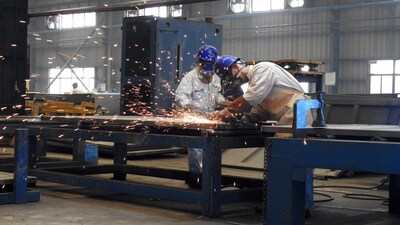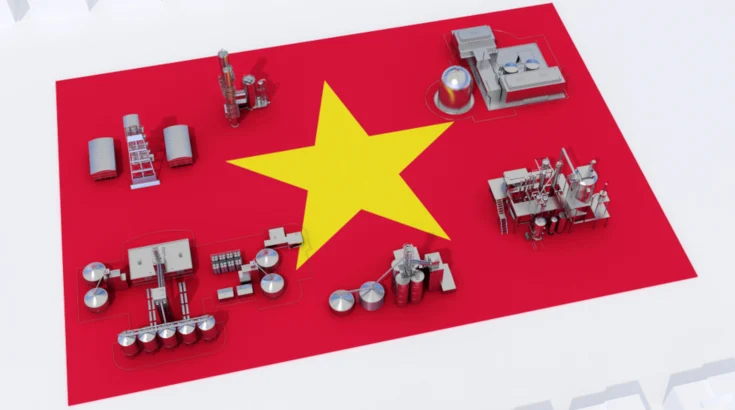Vietnam’s Manufacturing Revolution: Why the World Is Shifting Production Here
In the past decade, Vietnam has rapidly transformed from an emerging market to one of the most competitive manufacturing hubs in the world. Thanks to its strategic geographic location, skilled yet cost-effective labor force, robust government support, and growing network of free trade agreements, Vietnam has emerged as a magnet for global production—rivaling traditional giants like China.
This blog explores the forces driving Vietnam’s manufacturing revolution, highlights key sectors, and explains why international businesses are choosing Vietnam as their preferred destination for manufacturing and sourcing.
🔗 Looking to start manufacturing in Vietnam or find trusted suppliers?
👉 Connect with experienced partners at vietnam-agent.com
🌏 The Global Shift in Manufacturing: Vietnam Takes the Lead
Global supply chains are being restructured at an unprecedented scale. Rising costs in China, geopolitical tensions, and the aftermath of the COVID-19 pandemic have led companies to diversify their production bases—a strategy often referred to as “China+1.”
Vietnam is the clear winner in this shift due to:
-
Proximity to China (for raw material and component sourcing)
-
Stable political and economic environment
-
Young, tech-savvy labor force
-
Government incentives and low tax regimes
From tech giants like Samsung and Intel to apparel leaders like Nike, Adidas, and H&M, the world’s most recognized brands are now manufacturing in Vietnam.
🔧 Vietnam’s Key Manufacturing Strengths
✅ 1. Cost-Effective, Skilled Workforce
Vietnam offers competitive labor costs—up to 50% lower than in China—without compromising on skill. The government’s heavy investment in technical education and vocational training has created a generation of skilled factory workers and engineers.
-
Average monthly wage (2024): ~$300–$350
-
High literacy rate: ~95%
-
Strong engineering & STEM pipeline from universities
✅ 2. Strong Industrial Infrastructure
Vietnam has invested billions into developing industrial parks and export processing zones (EPZs), which offer:
-
Ready-built factories & warehouses
-
Reliable utilities (power, water, internet)
-
Streamlined administrative support
-
Tax incentives for FDI manufacturers
Key hubs include Bac Ninh, Binh Duong, Dong Nai, Hai Phong, and Ho Chi Minh City.
✅ 3. Strategic Trade Agreements
Vietnam has signed over 15 free trade agreements (FTAs), giving manufacturers duty-free or reduced tariff access to over 50 markets, including:
-
EVFTA (Vietnam–EU FTA)
-
CPTPP (Comprehensive and Progressive Agreement for Trans-Pacific Partnership)
-
RCEP (Regional Comprehensive Economic Partnership)
-
Vietnam–UK FTA
This gives companies a powerful incentive to manufacture in Vietnam and export to global markets at lower cost.

🏭 Leading Sectors in Vietnam’s Manufacturing Boom
Vietnam’s manufacturing revolution spans multiple industries. Here are the top sectors attracting international investment:
📱 1. Electronics & Semiconductors
-
Vietnam is the world’s 2nd-largest exporter of smartphones, largely due to Samsung’s mega-factories
-
Home to Intel’s largest chip assembly facility globally
-
Foxconn (Apple supplier) and LG have also expanded operations
Vietnam is becoming a high-tech manufacturing powerhouse with rising opportunities in AI hardware, IoT devices, and consumer electronics.
👚 2. Textiles & Garments
-
Over $44 billion in annual garment exports (2023)
-
Supplying brands like Zara, Uniqlo, Calvin Klein
-
Government push towards eco-friendly, digital textile manufacturing
Vietnam is one of the top 3 garment exporters globally and continues to benefit from sustainable fashion trends.
👟 3. Footwear
-
Major exporter of sports shoes and leather goods
-
Key supplier for Nike, Puma, and Adidas
-
Accounts for over 10% of global shoe production
With skilled labor and advanced factories, Vietnam’s footwear industry continues to expand into premium and high-tech footwear.
🪑 4. Furniture & Wood Products
-
Vietnam is the 2nd-largest furniture exporter in the world (after China)
-
Exports mainly to the US, EU, Japan, and Korea
-
Booming e-commerce demand for flat-pack furniture
Vietnam’s furniture sector is known for craftsmanship, competitive pricing, and eco-certified wood sourcing.
🚗 5. Auto Parts & Mechanical Components
-
Strong base for supporting industries (metal, rubber, plastics)
-
Attracting FDI in electric vehicle (EV) parts and assembly
-
Homegrown automaker VinFast now exports EVs globally
🧭 Strategic Locations for Manufacturing in Vietnam
| Region | Key Areas | Industry Focus |
|---|---|---|
| North | Hanoi, Bac Ninh, Hai Phong | Electronics, ICT, textiles |
| Central | Da Nang, Quang Nam | Logistics, furniture, light industry |
| South | Ho Chi Minh City, Binh Duong, Dong Nai | Garments, footwear, food, machinery |
Southern Vietnam leads in labor-intensive and consumer goods manufacturing, while the North has become a hub for high-tech and electronics due to its proximity to China.
📈 Government Support & Investment Incentives
Vietnam’s government actively promotes industrial development through:
-
Tax holidays and reductions for high-tech or export-oriented projects
-
Land lease discounts in industrial zones
-
Grants and financing for tech transfer and green energy upgrades
-
Streamlined investment licensing through the Ministry of Planning and Investment
🔗 Need help setting up manufacturing in Vietnam or registering your business?
👉 Get support from local experts at vietnam-agent.com
⚠️ Key Challenges and How to Navigate Them
| Challenge | Strategy |
|---|---|
| Bureaucracy & regulation | Work with local agents and legal counsel |
| Infrastructure gaps in rural areas | Choose developed industrial zones |
| IP protection & compliance | Register trademarks early and conduct due diligence |
| Logistics delays | Use established freight forwarders & customs brokers |
🔍 Case Studies: Global Giants Betting Big on Vietnam
🌟 Samsung Electronics
-
$17 billion investment in Bac Ninh & Thai Nguyen
-
Over 100,000 employees in Vietnam
-
Vietnam accounts for nearly 50% of Samsung’s smartphone output
🌟 Foxconn (Apple supplier)
-
Moved iPad, AirPods, and iPhone component production to Vietnam
-
Plans to invest $300+ million in Quang Ninh province
🌟 Nike & Adidas
-
Vietnam now produces over half of Nike’s global footwear supply
-
Suppliers employ tens of thousands across the south
These companies are not just outsourcing—they are building long-term supply chain ecosystems in Vietnam.
🔚 Conclusion: Vietnam Is the Future of Manufacturing
Vietnam’s manufacturing revolution is not a temporary trend—it’s a strategic shift in global production dynamics. The country offers an unbeatable mix of affordability, talent, reliability, and global trade access.
Whether you’re a startup looking to source apparel or a Fortune 500 company planning to relocate assembly lines, Vietnam offers scalability, quality, and cost-efficiency that few countries can match.
🔗 Ready to explore Vietnam’s manufacturing opportunities?
👉 Partner with expert agents at vietnam-agent.com
